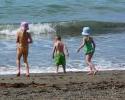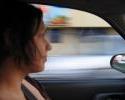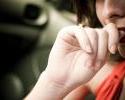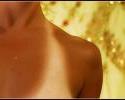Although animal behaviorists disagree about whether dogs can have obsessive thoughts, they know that canines can suffer from a compulsive disorder.
Our furry best friends may become trapped in senseless and distressing behaviors that are difficult to change.
An early sign of OCD (obsessive compulsive disorder) in your dog is the occasional demonstration of a behavior that is out of context. For instance, many dogs chase and snap at flies, but it is not normal for a dog to pursue and snap at bugs that are not there.
Six Common OCD Behaviors Exhibited by Dogs:
- Flank-sucking. This behavior is just what it sounds like, and it may be a displaced nursing activity. Some dogs will continually suck on soft toys or blankets instead of their own flank—less harmful physically for the dog, but still distressing.
- Light and shadow chasing. Dogs may compulsively chase, stare at, snap, or bark at lights or shadows. This is likely related to predatory instincts. The behavior can be triggered in some dogs when an owner uses a laser or flashlight beam as a toy.
- Lick granuloma. Acral Lick Dermatitis (ALD), or lick granuloma, is the repetitive licking of the dog’s own hind or front legs. Eventually, the licking creates bare spots on the legs that can lead to open sores and serious infections of the skin.
- Fly-snapping. As mentioned above, a dog snapping at flies is normal behavior when flies are present. However, a canine with OCD may snap at imaginary insects. This frequently causes anxiety for the dog that is unable to escape the tormenting flies. (Occasionally, fly-snapping is caused by a seizure disorder.)
- Tail chasing and spinning. Compulsive tail chasing can begin as a cute behavior that owners reinforce with their attention. As with light and shadow chasing, this is considered a displaced predatory behavior.
- Pica. Eating inappropriate objects, called pica, is something many dogs do occasionally. For some dogs eating things such as twigs, stones, paper, or acorns become a compulsion. It can be life-threatening if the swallowed objects obstruct the dog’s bowel.
What Not To Do
Trying to suppress a dog’s compulsive behavior by using punishment is not helpful and may be dangerous for the dog. It adds to the canine’s already high stress level and there is a risk the dog will transfer the compulsion to a different behavior.
An OCD behavior modification plan is the best approach. Contact a veterinary behavior specialist to confirm your dog’s OCD diagnosis and to determine the best treatment steps for your four-legged family member.
Source: Whole Dog Journal







